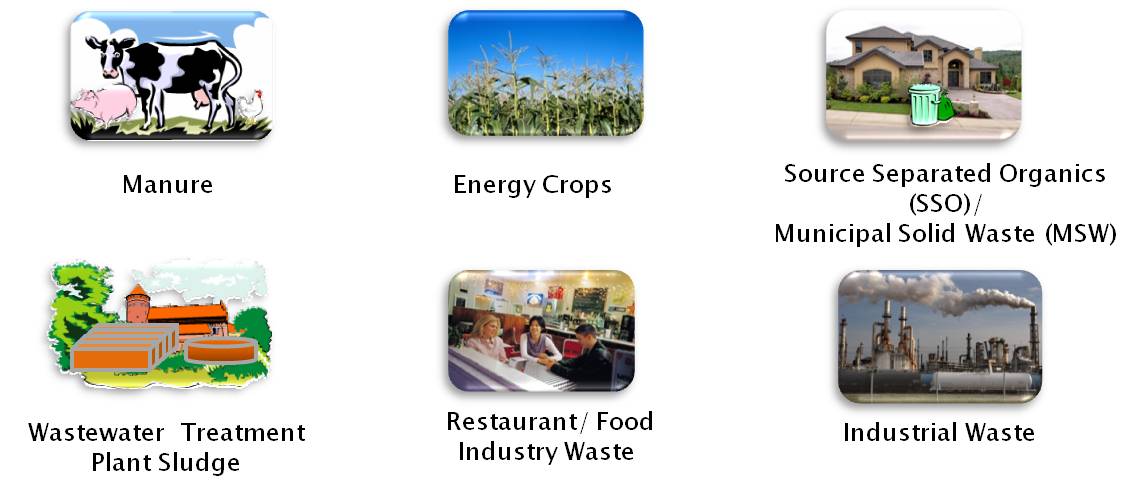Anaerobic Digestion Wastes
Traditionally anaerobic digestion wastes were manure, animal waste and waste water sludge. But recently food processing waste and organic waste from household have drawn significant attention as promising feedstocks that can increase gas production significantly. In addition, agricultural residues, yard waste and even municipal solid waste can also be used as feedstocks for anaerobic digestion after appropriate pre-treatments. Introduction of new pre-treatment technologies and innovative digester types have opened the option of recovering energy from diverse waste streams rather than sending them to land fill.
Some common and emerging feedstocks for anaerobic digestion are discussed below:
Anaerobic Digestion Wastes Types

Manure
Solid or liquid manure produced in animal farms (cow, pig, chicken etc.) is one of the main feedstocks for biogas production.
Domestic Source Separated Organic (SSO) Waste
This waste category include separately collected kitchen waste like fruit and vegetable waste, food waste, coffee and tea filters and other organic leftovers.
Yard and Plant Waste
Yard or plant waste include leaves; garden wastes likes flowers, plants, vegetables; branches and tree trimmings, grass clippings etc.
Energy Crops
Energy crops are plants suitable for producing biogas and other renewable energy. Examples of energy crop include corn, Sudan grass, maize, millet, white sweet clover, sugar cane etc.
Sewage Sludge
Almost all Wastewater treatment plants produced sewage sludge and this sewage sludge can also be used as feedstocks for anaerobic digestion to produce biogas. Although due to its limited potential for biogas production it is not treated as a high quality substrate.
Industrial and Restaurant Food Waste
Industrial food wastes mainly come from food and meat production sites
like slaughter house waste, whey, potato mash, brewer grains etc. In addition
food waste can be collected from restaurants, grocery stores, and other food
handling facilities and used as high potential biogas producing substrates.
Potential Co-digestion Feedstocks
Many high strength and emerging feedstocks have the potential to be co-digestion feedstocks. A good co-digestion feedstock should fulfill certain requirements such as:
The lists of such feedstocks are as follows:
- Fats, oils, and grease (FOG)
- Source Separated organics (SSO)
- Restaurant food scraps
- Food manufacturing and Baking industry wastes
- Breweries and distilleries
- Slaughter house wastes
- Dairy wastes
Discover more on Anaerobic digestion Wastes in the following pages:
Wastes Sources and Characteristics
Anaerobic Digestion Wastes Pre-treatments
More on Anaerobic Digestion Wastes
Go back to the Eco Ambassador Home
Total Visits to Site:
